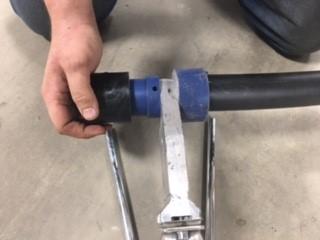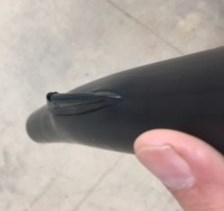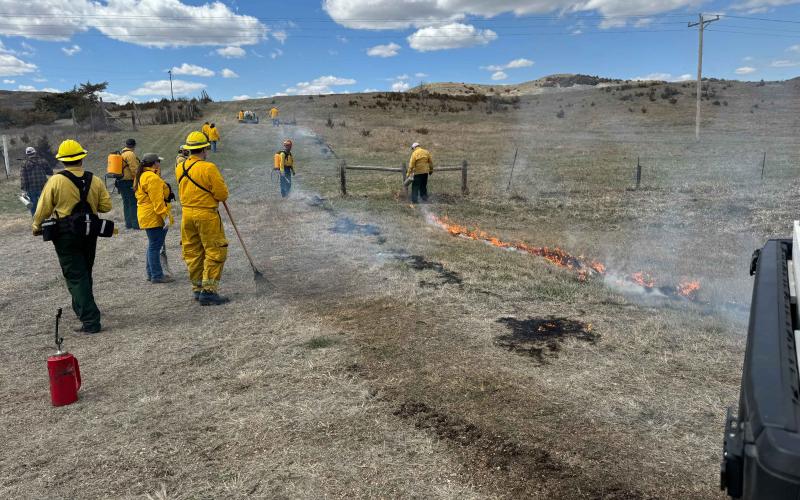
Above-ground systems offer a great amount of flexibility in delivering water and options for changing pasture designs over time or space. They have also become increasingly popular with the advances in solar water and fence technology along with an increasing number of producers preferring to rotate livestock more often. Quick compression fittings and a variety of adapters for several thread types allow for excellent flexibility. However, some producers do not desire to maintain as much flexibility in their systems, and for those individuals more-permanent options exist without going to a deep-bury system.
Welded Connections
The first additional level of permanence is to use welded couplings with an above-ground, high-density polyethylene (HDPE) pipe system instead of removable compression couplers and fittings. Wayne Vincent with Common Sense Manufacturing of Faulkton, South Dakota utilizes welded couplers on many of his overland water systems. Welded fittings are installed utilizing a simple machine that heats the pipe and the fitting and welds the two together. He suggests that if a producer is certain about where they want their pipes to be located and do not foresee the need for a great deal of future flexibility, welded fittings can be advantageous. A variety of sizing bushings and threaded adapters allow for fusion (welded) fittings from the start of the pipeline at the water source all the way to the float valve at the tank. When compared to trying to install PVC pipe with primers and glues, installing the welded system is faster and stronger.

Vincent also shared information regarding a relatively rare issue he has witnessed regarding air entrapment in some above-ground systems, which can produce a rupture in the pipe wall. It takes the perfect storm of factors for entraped air to rupture a pipe, and he believes the primary contributing factors are likely due to hot pipe/hot water (due to exposure to the sun) exposed to a rush of cold water (usually sourced from a well or rural water). This issue can be prevented by installing air gaps at the top of the rise on either side of the drop.
Shallow-Bury Systems
Vincent also has shallow-buried several HDPE welded pipe systems in recent years. Shallow-bury systems are usually within two feet of the soil surface (not below the frost line) and can be installed using a simple shallow plow that causes minimal soil disturbance. Shallow-bury appears to normalize pipe temperatures and thus appears to avoid the entrained air rupture issues associated with some above-ground systems. However, shallow-bury systems can still get a vacuum lock associated with high spots on occasion and air gaps are still recommended.


